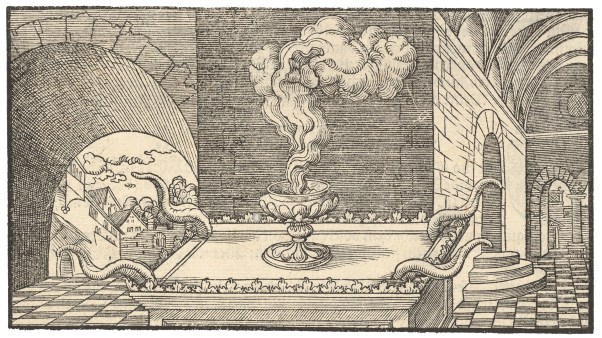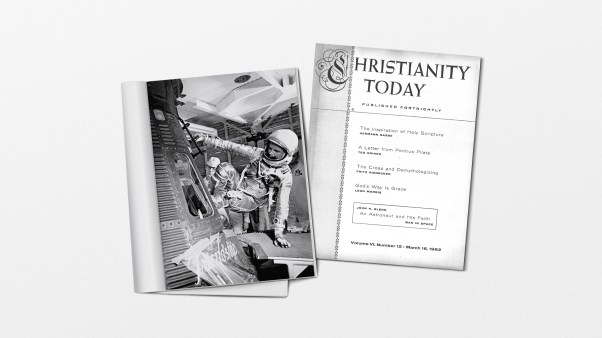In bestsellers and movies, unlocking the secrets of the past is a combination of luck, smarts, and sex appeal. Rarely does it labor under the burden of full scientific rigor, and often the science serves the plot line, not vice versa. A television adaptation a few years ago of one such novel (which shall remain nameless) included, among other implausibilities, an archaeologist not realizing a lost city could be located under a desert landscape and the use of an astrolabe to find an exact position—at sea![1]
But there is still real adventure to be found in demystifying ancient artifacts and documents. Decoding the Heavens, by science journalist Jo Marchant, outlines the discovery and slow piecing together of a remarkable Greek orrery, while the story of The Archimedes Codex is detailed to us by Reviel Netz and William Noel, two of the main scholars involved in uncovering its mathematical (and other) revelations. Here, the miniseries got it right; as amply borne out in these books, painstaking deciphering of texts, the use of modern imaging techniques, and very personal stakes in the outcome are part and parcel of this trade.
The short version of the tale in the longer and more technical book of the two, The Archimedes Codex, goes like this. During the Punic Wars, Archimedes of Syracuse (in modern Sicily) made astounding mathematical and scientific advances, including bringing to its climax a method similar to integral calculus called exhaustion. Eventually, some of his works were copied onto parchment codices. Most were lost, but at Easter in 1229, a Byzantine priest finished a prayer book, reusing the parchment from one of these codices. When it reappeared nearly 700 years later, philologist Johan Heiberg recognized this as concealing unknown works of Archimedes—upon which the manuscript went missing again. In 1998, it reappeared again, this time at auction, and was purchased by an anonymous private collector, who promptly devoted massive resources at conserving it and making it available to scholars.[2]
Netz and Noel describe all this history, as well as their own (and many colleagues’) contributions to preserving and understanding the manuscript, in great detail; occasionally, it’s too much detail for the non-expert. Among the more trivial finds is the name of that Byzantine priest, John Myronas. Among the more sublime, we now know that it is highly likely Archimedes used an actual infinity in a proof, not just in heuristic reasoning—tearing a large hole in our understanding of how the Greeks dealt with the (still problematic) question of what infinity is.[3] Somewhere in between lie the discovery of the real interpretation of the Stomachion (Belly-Ache) puzzle and the recovery of speeches by Hyperides, one of the great orators of Athens.
Decoding the Heavens is more explicitly a detective story all the way through. Even the opening chapters show this, in describing the remarkable first recovery of artifacts from an ancient ship (by sponge divers) off the Greek island of Antikythera in 1900-01. One find in particular was totally alien to the usual statues and amphorae, and eluded identification: a set of bronze and wood fragments, largely comprised of gears and spokes. This is now called the Antikythera mechanism.
What was it? Only a few studied it, but one dedicated person after another caught the bug and gave it loving analysis. It was revealed to be nothing less than a full mechanical emulator of (at least) the sun, the moon and its phases, a comparison of lunar and solar calendars, and eclipses at any point in time one chose. Nothing remotely like this is known for over a thousand years after it, and it truly raises our estimate of what ancient peoples were capable of technologically.[4]
Unfortunately, this story is far more sobering from a human perspective. Scholars languish for years, not allowed to work on their tracings or images; connections to pseudoscience relegate the mechanism to footnotes; at least one marriage fails in part due to obsession with it; and the conference where most of the mysteries are finally unlocked is marred by continuing hard feelings and claims of lost credit. It does not help that the author seems to take journalistic invention far enough at times to perpetuate absent-minded, arch-rationalist professor stereotypes. Nonetheless, it gives a real portrait of what archaeology and the long deciphering process can be, with an amazing object of study.
There are many worthwhile underlying questions these books implicitly raise. For instance, how is it that such monumental discoveries go by the wayside? No one used anything like exhaustion/integration for nearly 2,000 years. Yet it was not for lack of applicability; when it returned, Kepler and Galileo both (essentially) used it to formulate their laws of motion. Likewise, Marchant points to a few sophisticated clock-like mechanisms from before the late medieval period—but clearly indicates that such gearing is mostly absent until then.
Is this due to some cataclysm (as in a post-nuclear dystopian novel), impracticality (why did Mesoamerica have wheels, but apparently only in toys?), or some other reason? With many authors announcing a soon-to-come golden age of implants and computer-assisted thinking and leisure, such questions provide a more sober perspective.
The usefulness of basic research and cutting-edge technology is another key idea in both books, where big advances in processes such as multi-spectral imaging and CT scanning are clear heroes. Although it is doubtful that any immediate national security relevance will proceed from understanding the Stomachion puzzle or knowing how the Greeks calculated eclipses, it should be very clear that doing so has tested imaging and pattern-matching technology to the utmost in a concrete setting.
Anyone who has used or developed new technology knows that extreme and unexpected cases are where deficiencies are shown. Reading these books, one might be so dazzled by the results that one forgets that the technology strained by these discoveries may be embedded in something as commonplace as a cell phone in a generation—a statement which, a generation ago, would have seemed just as unlikely.
Finally, there is the question of cultural relevance, and whether we care—or should—about such discoveries and piecing them together. The Archimedes Codex was offered to a number of universities before appearing at Christie’s auction table, and Noel points out, “If you think this is a shame [that they didn’t buy it] then it is a shame that we all share.” Yet the story of the Antikythera mechanism, which has been the property of the Greek National Archaeological Museum from the beginning, is replete with hidden images, neglected missing pieces, and constant turf battles. There are no guarantees, in private or public hands, that anyone will care.
To put this in a more familiar context, the gentle reader is led to the recently expanded online viewable text of one of the most important witnesses to the New Testament, the Codex Sinaiticus.[5] Just select your favorite book of the Bible and start clicking and zooming, noticing scribal comments and emendations. What was the original intent? How do our notions of God compare with those of the authors of the Bible? Surely these are important questions, and modern technology and old-fashioned diligent scholarship collide, fruitfully, in such a project. Also, can we make that evidence available to more eyes?
This is what we should be asking of our past, and the witnesses to it. Particularly if science and math are often seen as the enigmatic Sibylline oracles of our world, then projects like those described in the books under review help us contextualize and demystify them, while simultaneously bringing us off our own pedestal. We aren’t smarter than the Greeks, but neither were they magicians. They were just as clever, religious, and ambitious as we ourselves are, and yet had human jealousies and missed big ideas right in front of their noses—just like us.
After all, the issue is not just understanding our history, but also understanding how to arrive at truth—and how to recognize it. Books & Culture is replete with articles showing how history (ancient and modern) helps us come at the truth of today, in areas as disparate as Native American Studies and deciding what counts as art. Science happens to be the place where we compartmentalize such things more than most, yet this task is important for science as well. Those outside the academy, as well as teachers—of history, classics, philosophy, and science—should take advantage of books like these to help science take its place as an exciting interdisciplinary field, neither otherworldly nor marginalized.
1. Since, as the name suggests, an astrolabe is primarily used for astronomical observation, the fact that this is supposed to occur in a huge storm renders it even more fantastical.
2. Go to archimedespalimpsest.org for tons of resources.
3. Christian views on this subject have also changed over time. The problem boils down to this: If God is not finite, in talking about infinity, we are claiming to truly understand some aspect of God. On the other hand, if we reject an actual infinity, we may be missing out on attempting to understand a key piece of God’s glory.
4. Based on dating of coins found later in the wreck, the mechanism is from around 65 BC. It is just possibly part of Pompey’s booty from the same trip on which he entered the Holy of Holies in Jerusalem, only to find it empty.
5. codexsinaiticus.org/en/manuscript.aspx
Books Discussed in This Essay:
Reviel Netz and William Noel, The Archimedes Codex: How a Medieval Prayer Book Is Revealing the True Genius of Antiquity’s Greatest Scientist (Da Capo Press, 2009).
Jo Marchant, Decoding the Heavens: A 2,000-Year-Old Computer—and the Century-Long Search to Discover Its Secrets (Da Capo Press, 2010).
Karl-Dieter Crisman is assistant professor of mathematics at Gordon College.
Copyright © 2012 by the author or Christianity Today/Books & Culture magazine.Click here for reprint information on Books & Culture.









